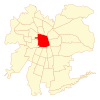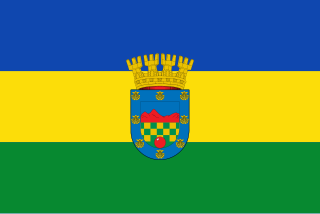
Quilicura is a commune of Chile located in capital Santiago. Founded in 1901, it was originally a satellite city on what were then the outskirts of the city of Santiago, but as urban sprawl has set in it is now quickly urbanizing from what was recently prime agricultural land.

Maipú is a commune of Chile located in Santiago Province, Santiago Metropolitan Region, integrated into the Greater Santiago conurbation. It was founded on 16 February 1821 and it is the place of the Battle of Maipú, where Chile's independence was consolidated. Inhabitants are mostly part of a middle class.
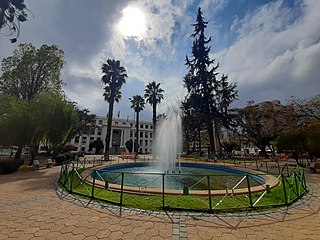
Ñuñoa is a commune located in the Northeastern zone of Santiago, within the Santiago Metropolitan Region of Chile.

Cerrillos is a commune of Chile located in a midtown area of Santiago and the southwest of the city — in the Santiago Province, Santiago Metropolitan Region — as a spot of the conurbation of Santiago. The commune was created in 1991 from a subdivision of Maipú.
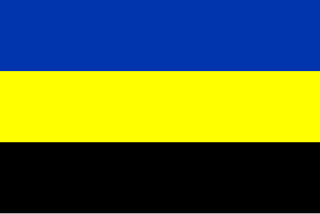
Cerro Navia is a commune of Chile located in Santiago Province, Santiago Metropolitan Region. It is one of the most densely populated communes of Santiago, Chile.

Huechuraba is a city and commune of Chile located in Santiago Province, Santiago Metropolitan Region.

Pedro Aguirre Cerda is a commune of Chile located in Santiago Province, Santiago Metropolitan Region. It is named after President Pedro Aguirre Cerda.

Peñalolén is a Chilean commune in Santiago Province, Santiago Metropolitan Region. It was founded on 15 November 1984.
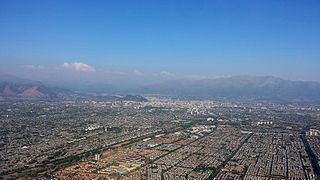
Pudahuel is a commune of Chile located in Santiago Province, Santiago Metropolitan Region. Santiago's international airport Arturo Merino Benítez is located there.

Renca is a commune of Chile located in Santiago Province, Santiago Metropolitan Region. It was founded on 6 May 1894.
San Joaquín is a commune of Chile located in Santiago Province, Santiago Metropolitan Region. It is part of Greater Santiago.
San Miguel is a commune of Chile located in Santiago Province, Santiago Metropolitan Region. It was founded on August 10, 1896.

Lampa is a Chilean commune and city in the Chacabuco province, Santiago Metropolitan Region. Lampa is situated near the Chicauma mountain range, part of which was added to the La Campana National Park.

El Monte is a Chilean city and commune in Talagante Province, Santiago Metropolitan Region. As of 2007, it had a population of 29,568.
Puente Alto is a city and commune of Chile. It is the capital of the Cordillera Province in the Santiago Metropolitan Region. Located at the south of the Great Santiago conurbation, it houses 568,106 inhabitants, making it the most populous commune in Chile.

Paine is a Chilean city, forming part of Greater Santiago, and a commune in the Maipo Province, Santiago Metropolitan Region.

San José de Maipo is the name of a commune in Chile and the city within it, located in Cordillera Province, Santiago Metropolitan Region, some 48 kilometers south-east of capital Santiago, bordered on the east by Argentina, across the Andes.

Pirque is a commune of Chile in Cordillera Province, Santiago Metropolitan Region; it is located 2.8 kilometers southeast of Puente Alto and 21.3 kilometers south-southeast of the center of Santiago. It is situated at the base of the Cajón del Maipo, and is the home of the Concha y Toro wine company.
Calera de Tango is a Chilean commune in the Maipo Province, Santiago Metropolitan Region.

Talagante is a commune and the capital city of the province of the same name in the Santiago Metropolitan Region of central Chile. The word Talagante in Quechua comes from talacanta, meaning "Lazo de Hechicero", which was the proper name of the curaca, or ruler, who dominated this central valley on behalf of the Inca empire during the arrival of the Spaniards.



